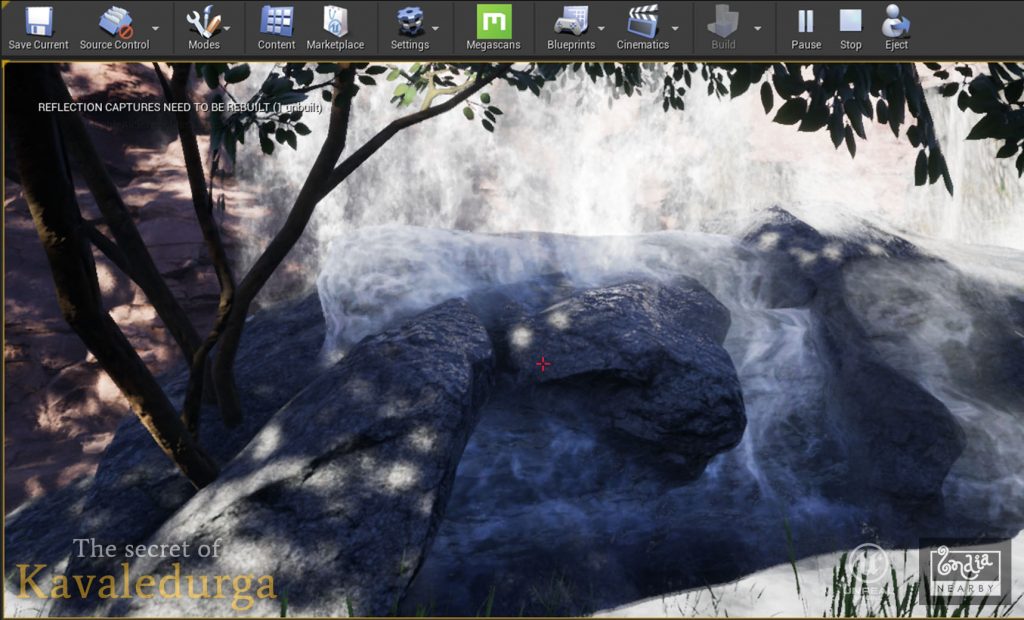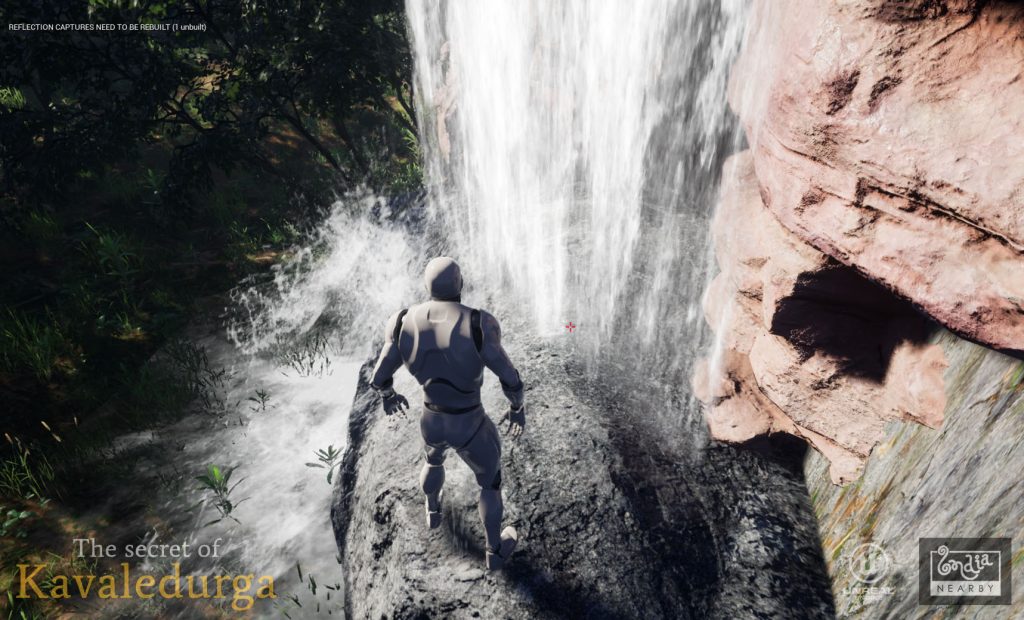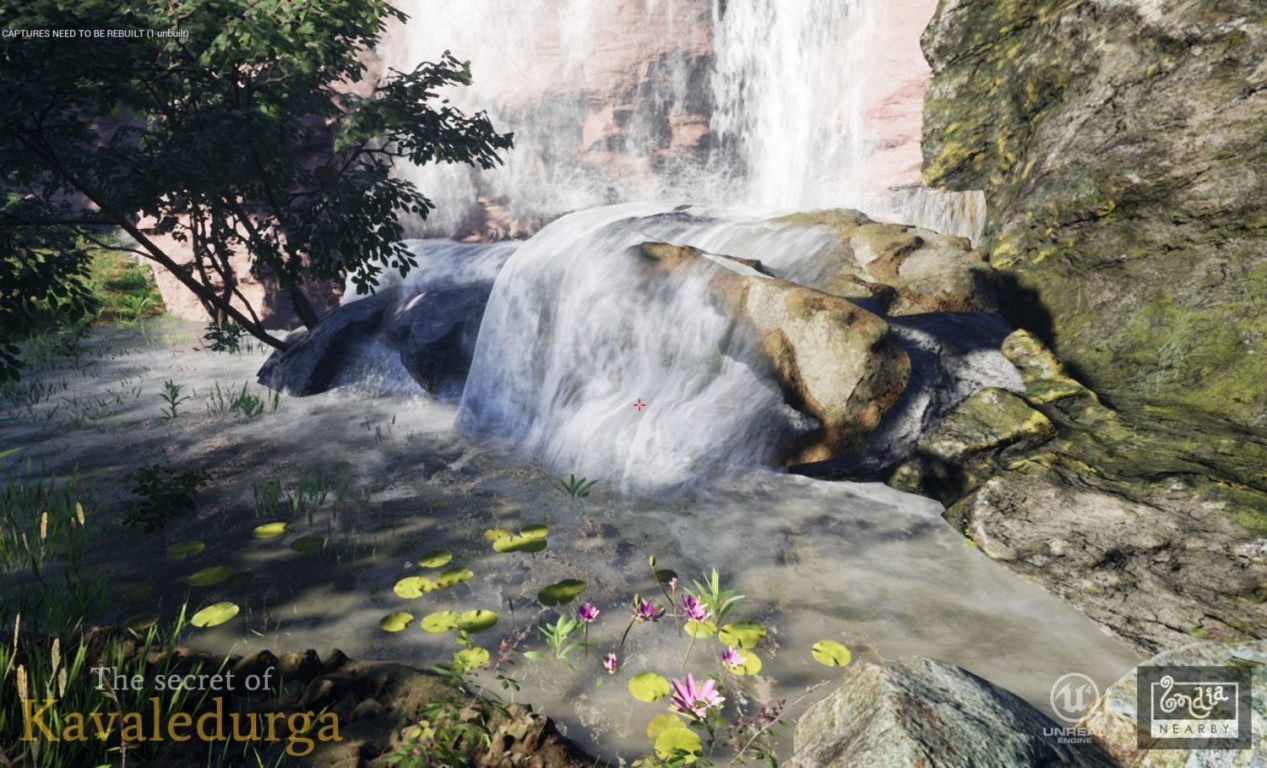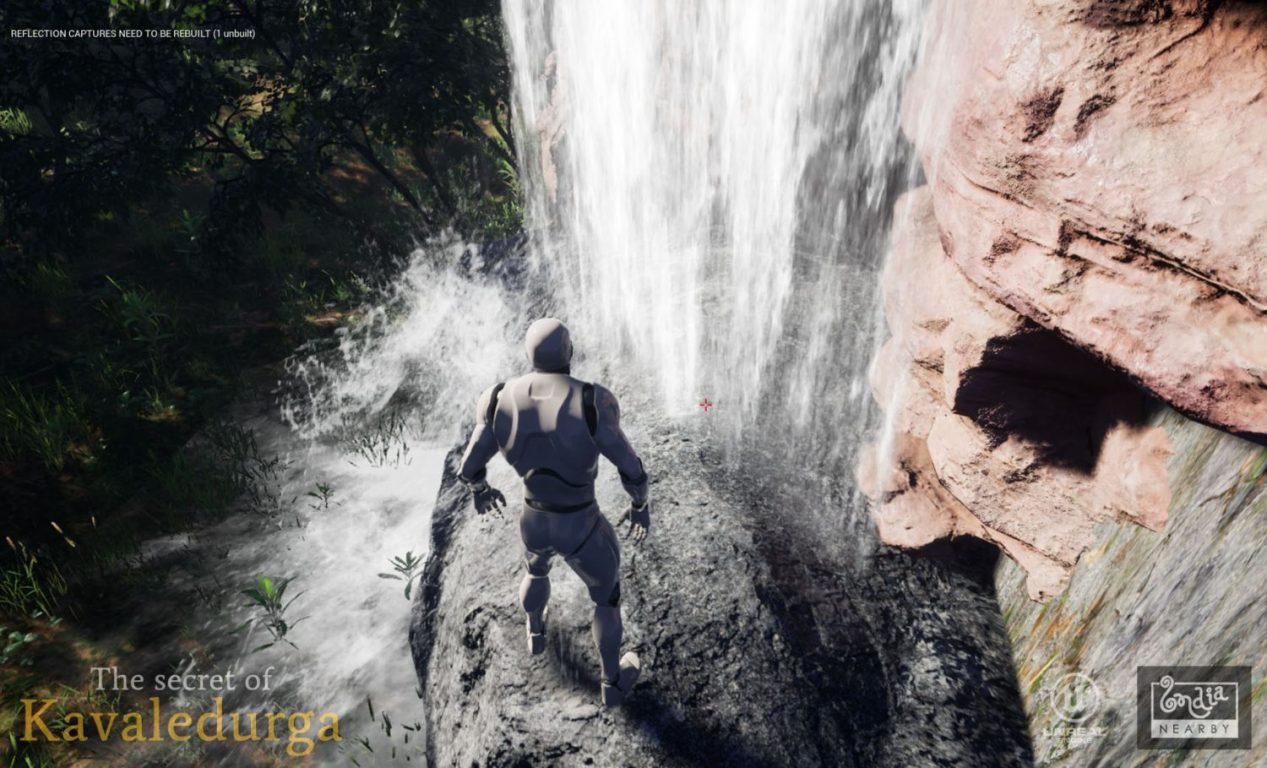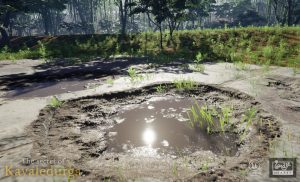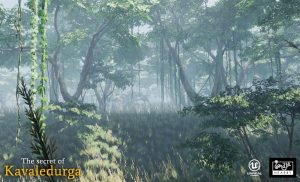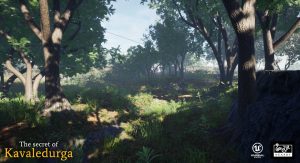Waterfall is a tricky thing. It has various elements. Creating an anatomy helps to implement a convincing waterfall. But that needs to have some sense of how it works, and how well it fits the environment of the game.
Anatomy of a waterfall
Waterfall consists of the main waterbody, a surface that “falls” or moves from top to down. The effect is achieved by an animated texture that consists of shades that mimic the shapes and foam of falls. It is important that it appears to move and extend (stretch and shrink) as it moves down. The same if for streams too. In fact, for any moving water surface. Interaction of the water surface with rocks that may interrupt their course, is another thing, as it moves around them. And all of this has a speed!
The next part is when it hits the ground. It creates a splash. And that also creates waves on the water below. The splash can be like a thick fog or actual splashes.
Splashes also occur along the water surface as it falls – splitting into parts. And especially near the top where its course changes abruptly from a surface run to a fall.
A cascading waterfall would have even more. The water will make the ground or rock wet as water runs over it continuously.
Our first waterfall
And so with that understanding and using some water elements and particle systems for splashes, here is our waterfall. We played with speed, translucency and contrast to get as close as we could, so far. But this still lacks a lot. Though nice looking, it does not go well with landscape and foliage that is much better or detailed. We added some quick lilies and rocks just to help the scene a bit.

